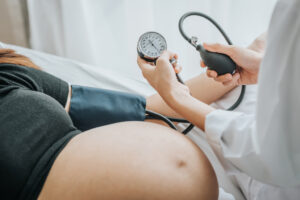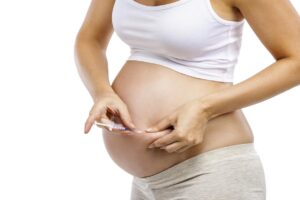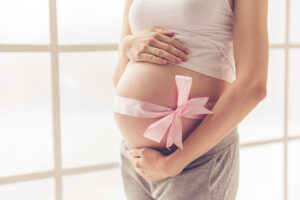When I decided to write this I was thinking that there’s not much sleeping in pregnancy, especially in the third trimester. However, there are a few dos and don’ts and a few tricks to help if you are not sleeping. Firstly, it is recommended that you don’t sleep lying flat on your back from 20 weeks onwards. The reason for this is that your womb will have grown to reach the height of your belly button. If you lie flat on your back from this stage onwards your womb and baby press on the large blood vessel that returns blood from around your body to your heart. If the blood supply slows you will faint/ lose consciousness and your blood supply will be impaired. So ideally sleep on your left side. Some women find that they go to sleep on their left side but wake up flat on their back. So a trick is to put a pillow halfway under you on the left side so that if you roll over during the night you aren’t totally flat.
Pillows are the key to comfortable sleep In the third trimester. A pillow between your legs will neutralize the angle of the pelvis as you lie on your side making it more comfortable to lie in this position. Some women also put a pillow under their bump. So basically you need 3 pillows for your body and one or two for under your head.
When I was pregnant I had terrible insomnia towards the end. I’d go to bed and wake up in the middle of the night. I found the worst thing I could do was stay in bed staring at the ceiling and thinking I have to get up for work in the morning I must go back asleep. What getting out of bed, reading a book or watching tv for an hour then I was able to go back to sleep. I also found a power nap after work was good but it’s only possible during your first pregnancy.
I think part of the reason sleeping is difficult is that your body is preparing you for being awake and feeding baby during the night. And once you have kids you never sleep the same way again but you adjust and its totally worth it.






